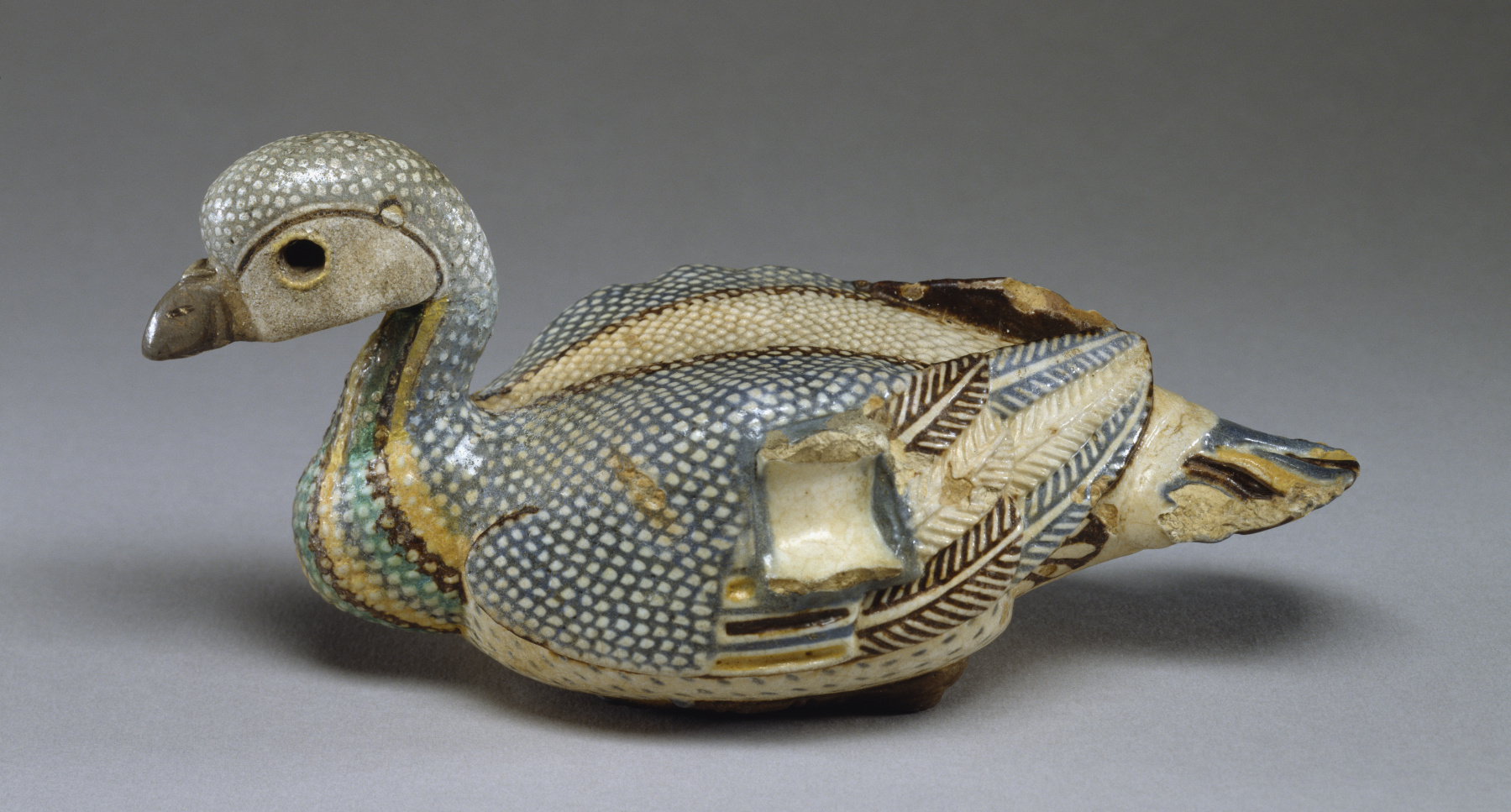Vase in the Shape of a Duck
Egyptian faience is a composite material composed of ground quartz and natron (sodium carbonate and sodium bicarbonate). Most faience is glazed in a vivid blue or green color; the polychrome faience seen here is much more complicated to produce. During the 26th Dynasty, the Greeks established merchant colonies in Egypt. Faience workshops in these towns produced goods for the local population, as well as products in an Egyptian style for export.
The duck was mold-made together with the remains of its ring handle on the bird's left side. The surface of the body displays a raised dot pattern, while the end of the wings have a feather pattern. The form may have been inspired by the red-figure duck vases of Etruria and south Italy. The duck is depicted with such detailed naturalism that the underside even has delicately modeled webbed feet.
Provenance
Provenance (from the French provenir, 'to come from/forth') is the chronology of the ownership, custody, or location of a historical object. Learn more about provenance at the Walters.
Dikran Kelekian, Paris and New York, [date and mode of acquisition unknown]; Henry Walters, Baltimore, 1926, by purchase; Walters Art Museum, 1931, by bequest.
Exhibitions
| 2016 | Pergamon and the Hellenistic Kingdoms of the Ancient World. |
| 1998-2001 | Highlights from the Collection. The Walters Art Gallery, Baltimore. |
| 1988-1989 | From Alexander to Cleopatra: Greek Art of the Hellenistic Age. The Walters Art Gallery, Baltimore. |
Geographies
Egypt, Alexandria (Place of Origin)
Measurements
H: 3 3/8 x L: 7 1/16 x D: 3 1/8 in. (8.5 x 18 x 7.95 cm)
Credit Line
Acquired by Henry Walters, 1926
Location in Museum
Accession Number
In libraries, galleries, museums, and archives, an accession number is a unique identifier assigned to each object in the collection.
In libraries, galleries, museums, and archives, an accession number is a unique identifier assigned to each object in the collection.
48.421


